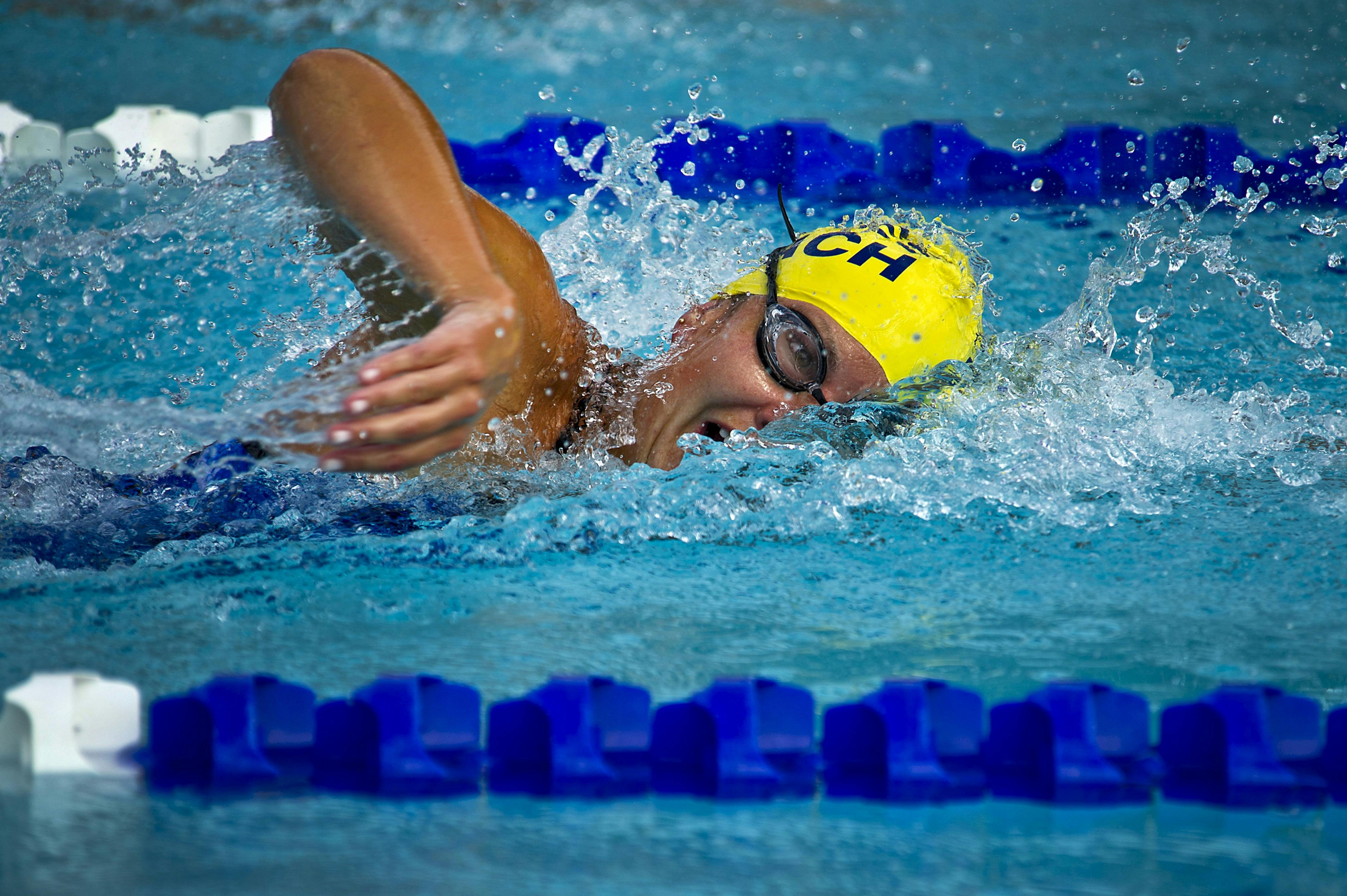Welcome to our Team!
Not every parent knows the ins and outs of the swimming community, but with time and experience you'll learn more about the sport than you ever thought possible. Your swimmer, other parents and coaches can help you along the way, so at your first swim meet you aren't completely confused by officials raising hands and the different strokes. Here is some basic information to help you get a jump start at being a swim parent!
The Four Strokes:

Freestyle: This the also called the "front crawl" but no one calls it that anymore. This is the first stroke your swimmer learns and has the fewest rules when it comes to getting disqualified. Typically the arms and legs move in an alternating fashion however swimmers may use any means necessary to create forward propulsion. To get disqualified in this event swimmers would have to fail to touch the wall when turning, pull on the lane line, or push off the bottom of the pool.

Backstroke: Is similar to freestyle except that it is performed completely on the back with the face out of the water. Swimmers can only turn onto their front when performing a flip turn. Races will start with all competitors in the water.

Breaststroke: Is a challenging stroke because it requires the feet to be turned out during the kick and legs must move simultaneously. Arms move together and recover in the water and swimmers' heads must break the surface with every stroke. Flutter kicking, dolphin kicking and non simultaneous arm strokes will result in disqualification. Not touching the wall with two hands and having hands pull past the waist will also result in disqualification.

Butterfly: This is the most challenging stroke your swimmers will learn and it will take time to master. In this stroke both arms pull on the water simultaneously and then recover over the water while the legs perform a dolphin like kick. This is the stroke that Michael Phelps specializes in. There are a number of ways swimmers can get disqualified in this stroke including: legs not kicking in one motion, arms not moving simultaneously, touching the wall with one hand not two, and recovering the hands forward under the water.
Caring for Your Swimming Gear:
Your swimming gear like your cap, goggles and swim suit are very important and can be costly to replace. Caring for your gear properly can double how long it would otherwise last.
Caring for Suits: It is important to note that a swim suit is not like a pair of gym shorts, it should NOT be washed in the washer and should absolutely under no conditions go in the dryer, this is the fast track to replacing your suit. The delicate material is quickly destroyed in spin cycles, soap and heat. Instead soak the suit in cold water for a few minutes or even over night, then squeeze the water out and let it air dry. Suits get sanitized every time they go in the pool so you don't have to worry about smell, sweat or stains. However, you can purchase special suit soap if you feel the need to wash it.
Caring for Caps and Goggles: Rinsing these items with cold water will help remove the chlorine from them, caps will often get sticky and tear and goggle straps will become thin and break easily if chlorine is allowed to dry on them over time. Silicone caps will last longer in general but are more expensive than latex caps. Consider which option is the best for you.




